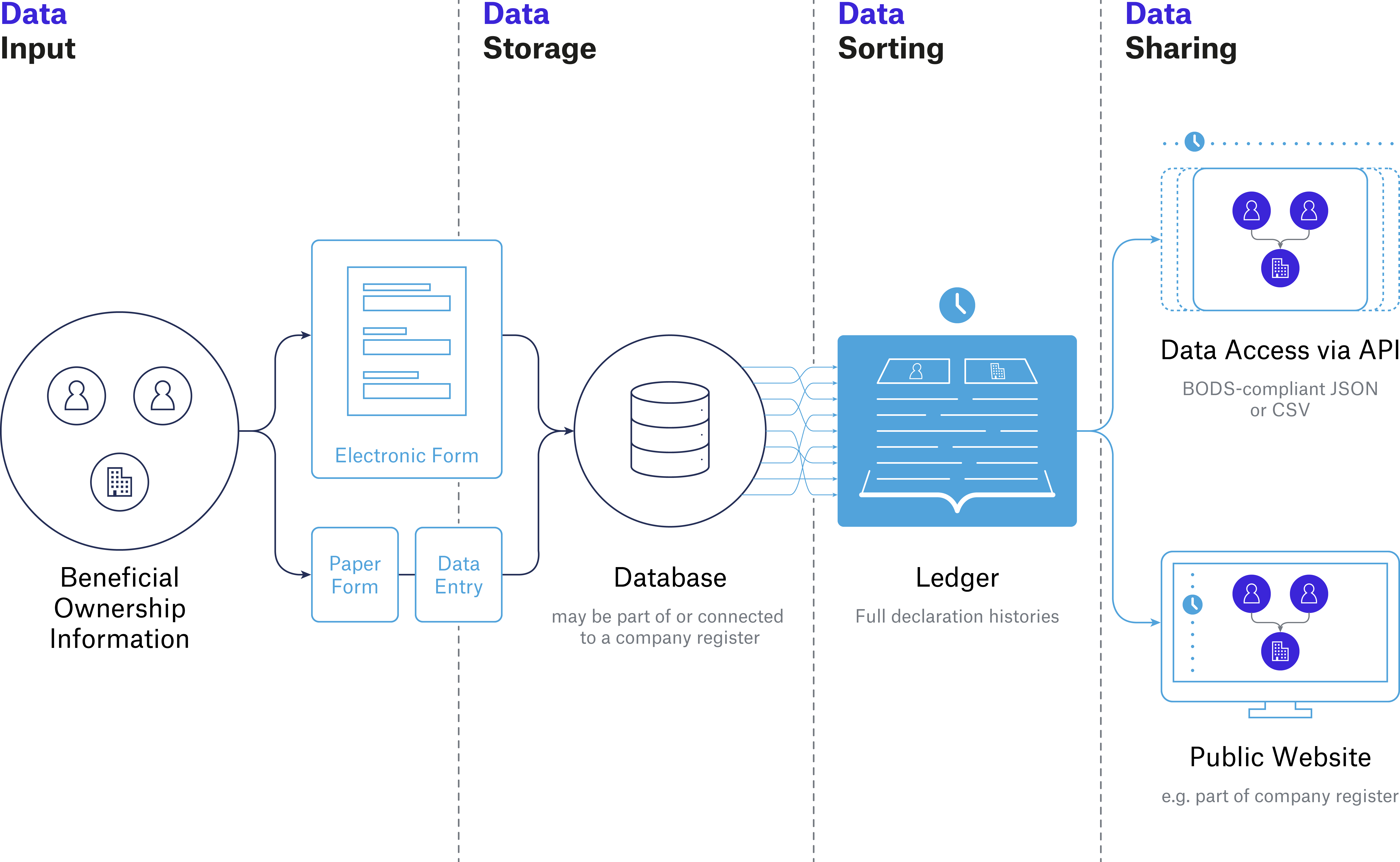Building an auditable record of beneficial ownership
Introduction
A record of beneficial ownership can be seen as a ledger of information that builds up over time. New information about the ownership and control of an entity supersedes older information as shares are sold, company rules are updated, and new companies are incorporated. This forms part of a well-designed beneficial ownership declaration and storage system. It can then be shared as necessary.

Figure 1. New information is brought into the system, over time building up a historical record
As with an accounting ledger, beneficial ownership information needs to be recorded and organised in a way that makes accessing and understanding it as easy as possible. The kind of questions people ask about beneficial ownership point to the features which are required of the ledger.
Example questions/searches:
- What did the beneficial ownership of the company look like in September 2021?
- What other companies did a particular beneficial owner act as a director of at that time?
- How did that beneficial owner's disclosed interests in the company change during the course of 2021? Were those changes reported within the legally-required timeframe?
- What reason was given for no beneficial owners at all being disclosed a year earlier?
To answer these questions we need companies and individuals to be identifiable, the source of information to be traceable, all information to be reliably dated, and gaps in expected information to be both visible and explained. Alongside these features, the more structured, standardised and machine-readable the data is, the easier it becomes to search, sort or explore, as is explained in this structured data briefing.
Next page: Feature one: reliable and comprehensive dates and times